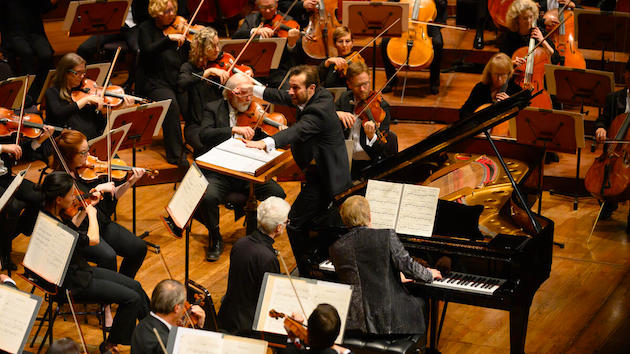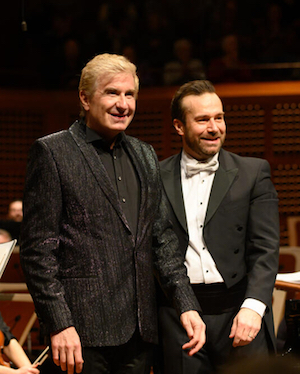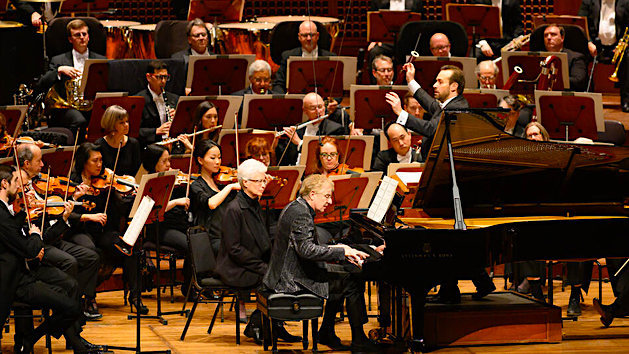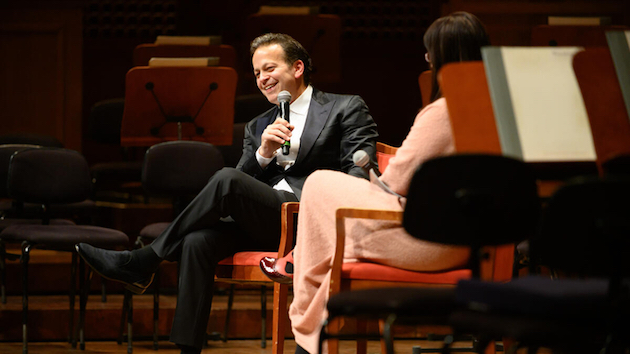
It was special effects night at Davies Hall. Screens, semistaging, and theatrical lighting, recurring concert features during the Michael Tilson Thomas era, were not involved. The bling, in the San Francisco Symphony’s February 14–16 concerts, was all aural.
The bill began with the plush and colorful scene painting of Paul Dukas’s programmatic La Péri and climaxed in the famous C-major organ blast near the end of Saint-Saëns’s showy Symphony No. 3. In between came a bravura tango fantasia for piano and orchestra by the film composer Aaron Zigman. Had the ushers offered glasses of Argentinian Malbec or cups of yerba mate and invited patrons to dance in the aisles, no one would have blinked.
 Fabien Gabel
Fabien Gabel
The signs were all there. This was meant to be an evening of unalloyed, even ecstatic pleasure rather than one of deep musical probing. And what better time to stage it than on a holiday weekend bracketed by Valentine’s Day and Presidents’ Day? The Lunar New Year lanterns still glowing in the lobby only added to the festive atmosphere.
The brasses got the emphatic first word, in an extended fanfare and chorale at the top of La Péri, which was conceived as a single-scene ballet about a Persian prince who steals a prized immortality flower from a female sprite (the eponymous péri). Spoiler alert: It doesn’t turn out well for the prince.
Like the composer’s celebrated showpiece, The Sorcerer’s Apprentice, this infrequently heard 1912 work travels in eventful orchestral narrative and quicksilvery moods. Everyone — including a pair of harps and a busy percussion section — pitches in. The cellos gush out a moist melody. The upper strings sigh and glide through glissandos. The woodwinds and brasses add pointilist dots and dashes. A recurring harmonic cell keeps turning up in different forms and guises. A blowsy climax gives way to a few musing afterthoughts by the horns.
Gabel led an attractively tinted performance. Eventually the thinness of the material began to wear. All the flashy orchestration couldn’t conceal a conceptual blandness, matched by a certain porousness in this reading of the score. Twenty minutes of La Péri was plenty.
Long and luxurious, swarming with bravura passagework, and by turns tender and feverish, Tango Manos took the audience by storm. Zigman, whose over five-dozen film-score credits include The Notebook, John Q, Escape from Planet Earth, and the big-screen Sex and the City, knows how to seduce and galvanize concert- as well as movie-goers. In Thibaudet, with his own movie credits (Atonement, Extremely Loud & Incredibly Close, the Zigman-composed Wakefield), he had a form-fitted accomplice.
The pianist set the temperature to a humid, tropical high in an opening solo, using the sustaining pedal to blur the outlines of the melody, then bounding into a crisply accented second subject. Soon enough maracas, castanets, snare drums, and more were flavoring the stew. The brass added seductive riffs. The harp shimmered. The strings surged and retreated. A bassoon sent up a plaintive song.

For all the smooth upholstery and perky uplift the band supplied, this was first and foremost Thibaudet’s show. At times as gentle and murmurous as a cocktail bar pianist, he could pivot into thunderous chordal passages as demanding as anything in Prokofiev or Rachmaninoff, his hands flying up and down the keyboard. In slow lyrical sections he drifted and lingered poignantly, most memorably at the tear-tugging end of the first movement. Then when he caught fire, the rhythms were taut and pulse-pounding, syncopation like gas on the flames.
The piece itself remained inventive, even as its circled and cycled through its themes. The piano strummed along idly at one point and plowed out a decisive ground bass at another. Gabel stitched it all together, evoking moonlight and sexy hip swivels, a big band blare and foot-stamping ardor. The dancing was all there in the music, a tango made manifest and writ large.

The Saint-Saëns occupied the second portion of the program. Things got off to an uneasy start and never fully recovered. Gabel’s tempos ranged from the ponderous to the hasty. Details went missing or got glossed over. But the orchestra sound was dark, deep, and lustrous.
That paid off handsomely in the end, as organist Jonathan Dimmock first supported the bass with pedal points then helped erect the towering chords above. It was full stops-out all around, from the silvery four-handed piano work to the exclamatory trombones and tuba. Fittingly, in an evening that opened with a brass fanfare, the sound was even bigger and more declamatory at the end.




